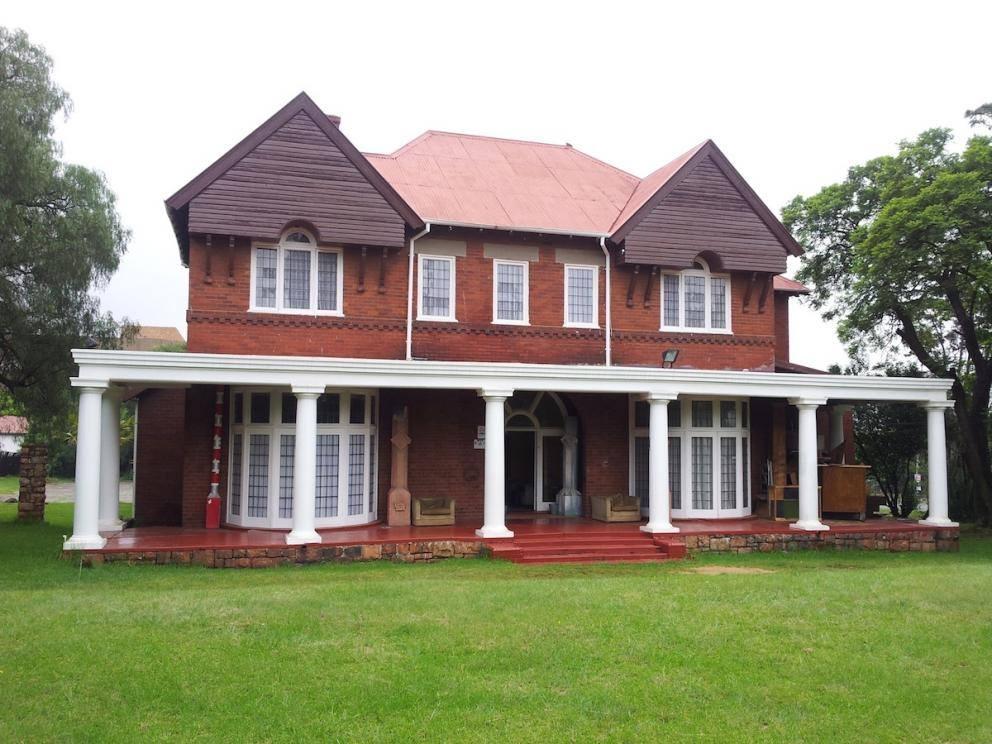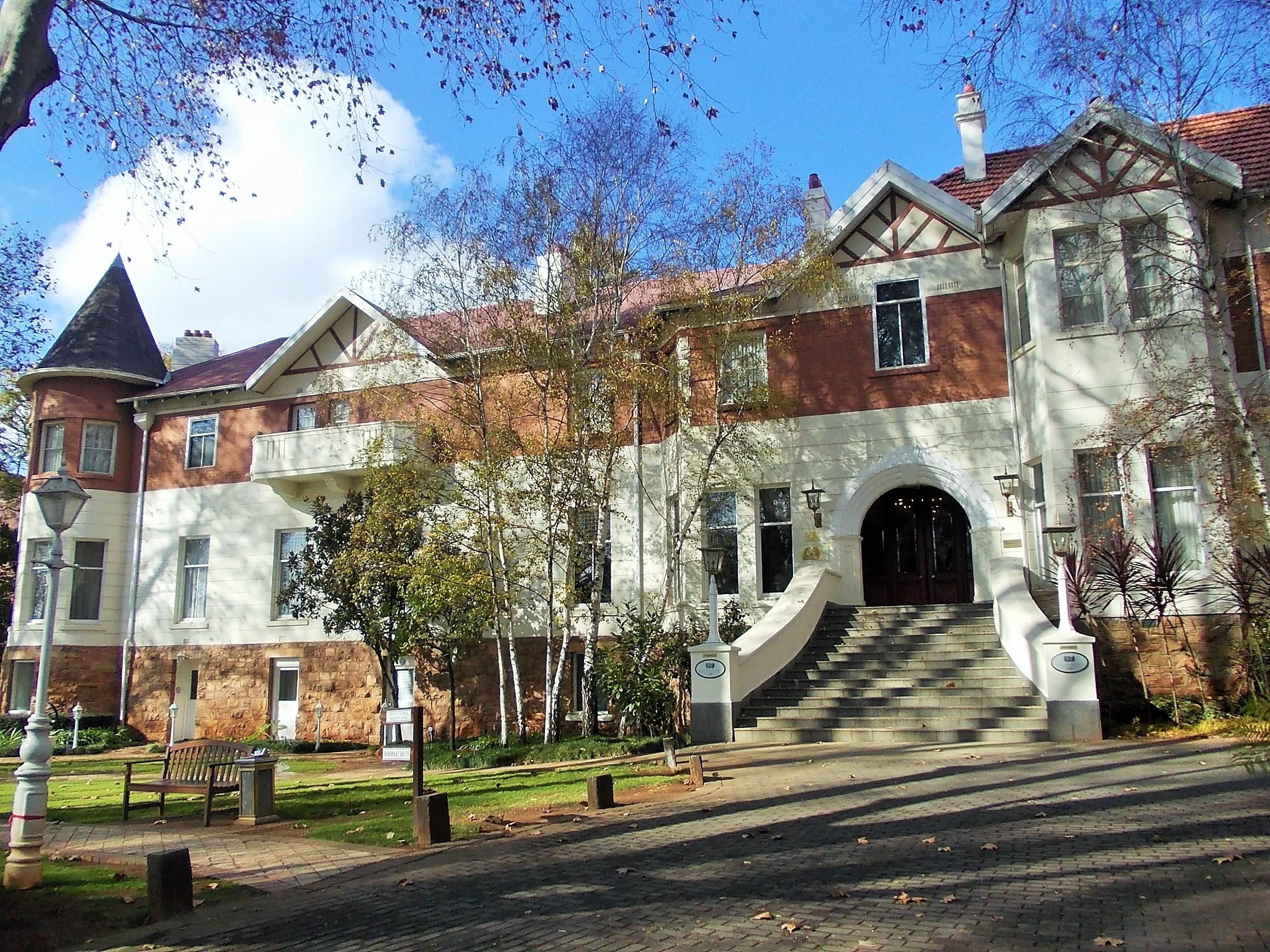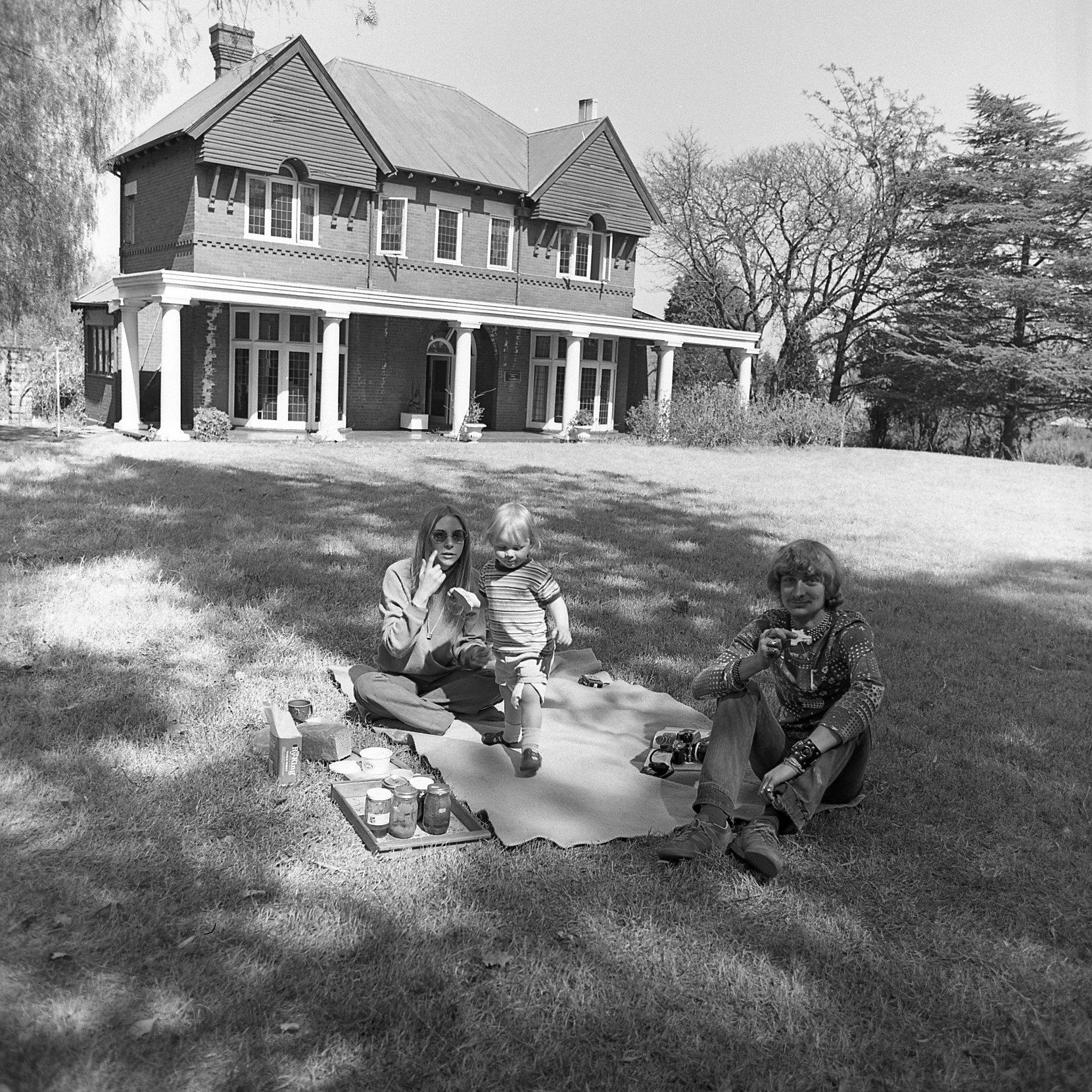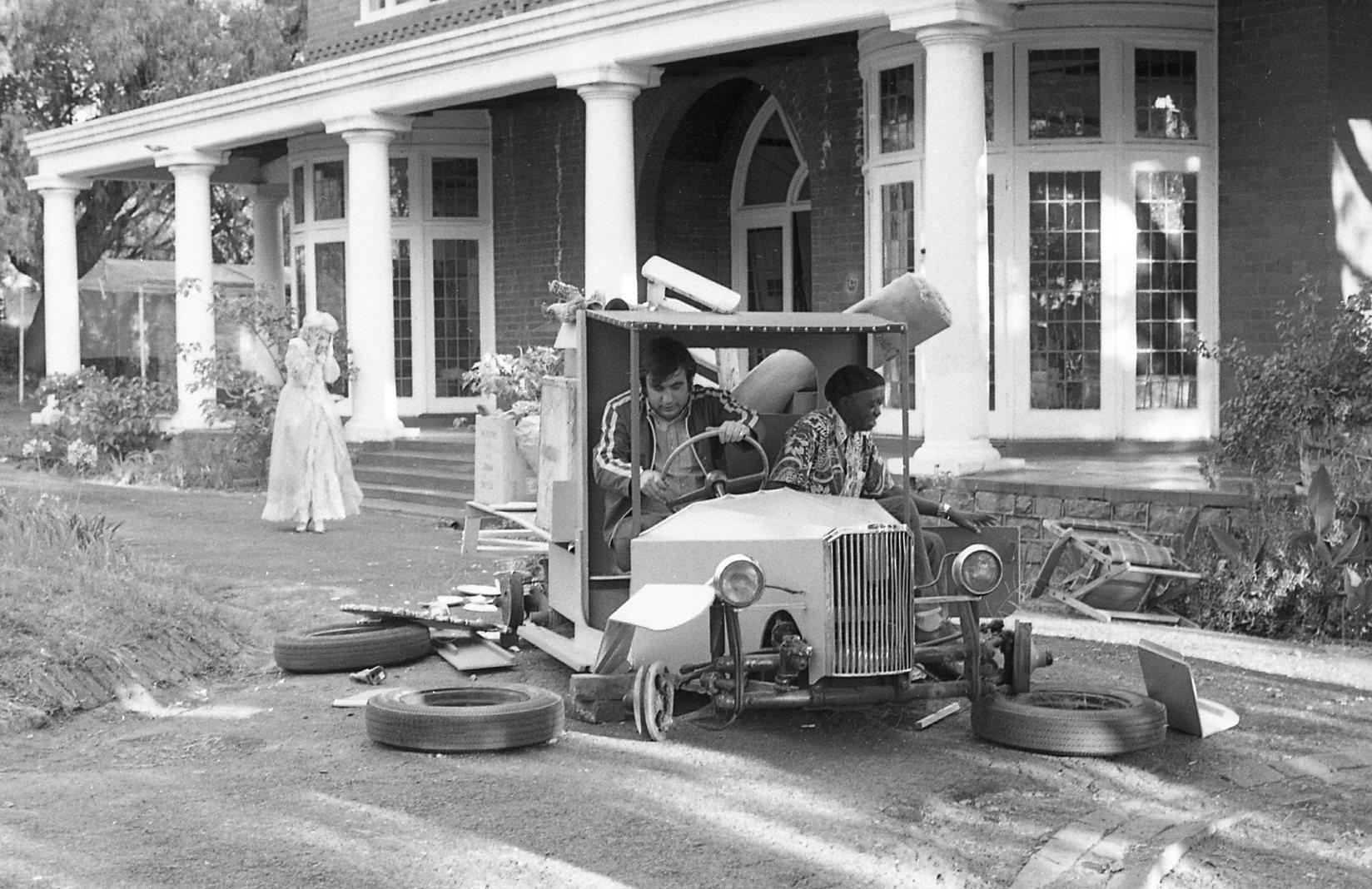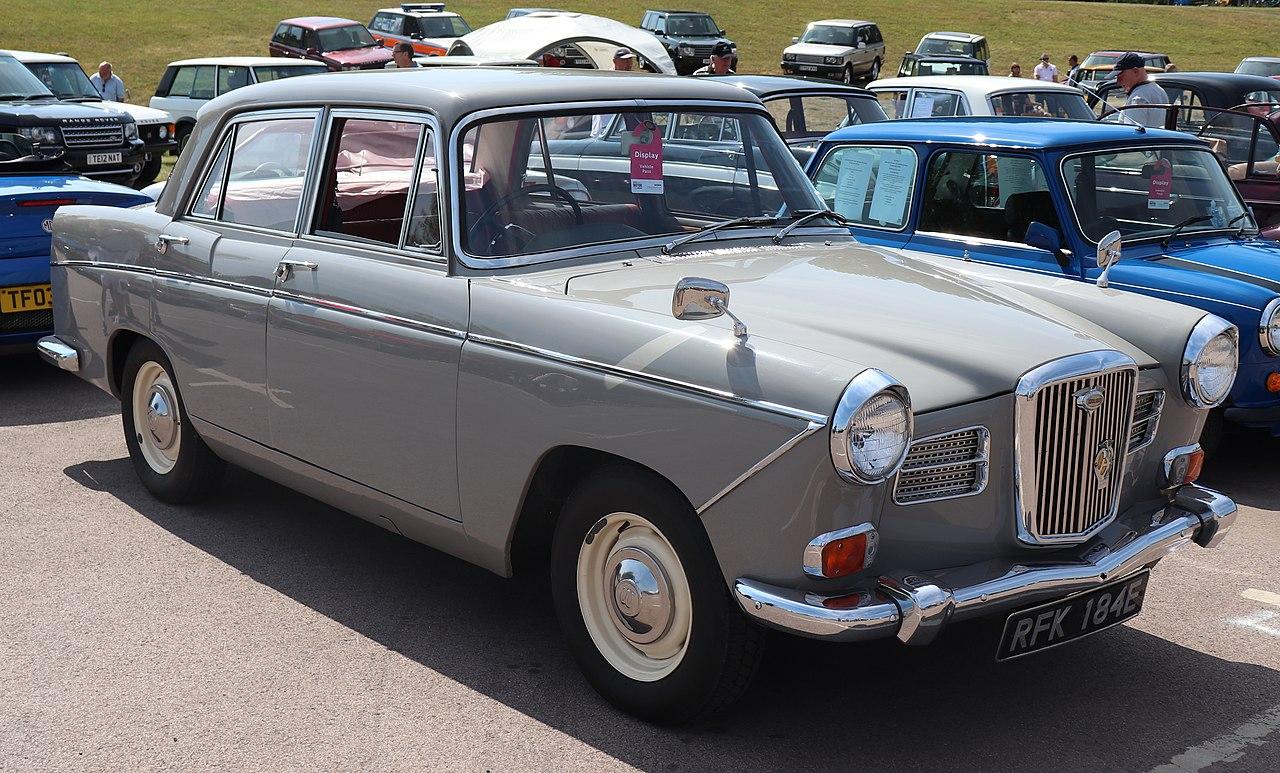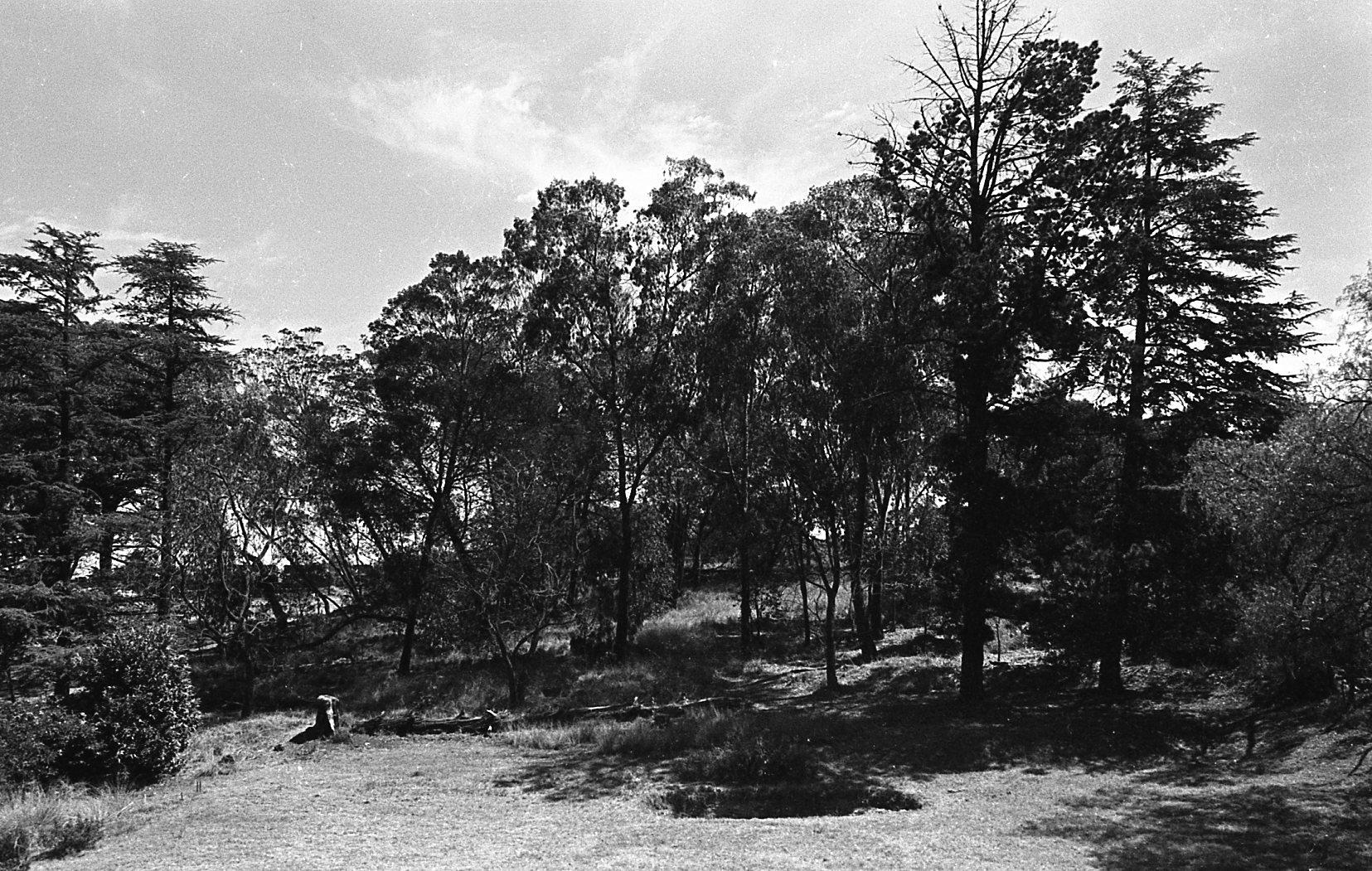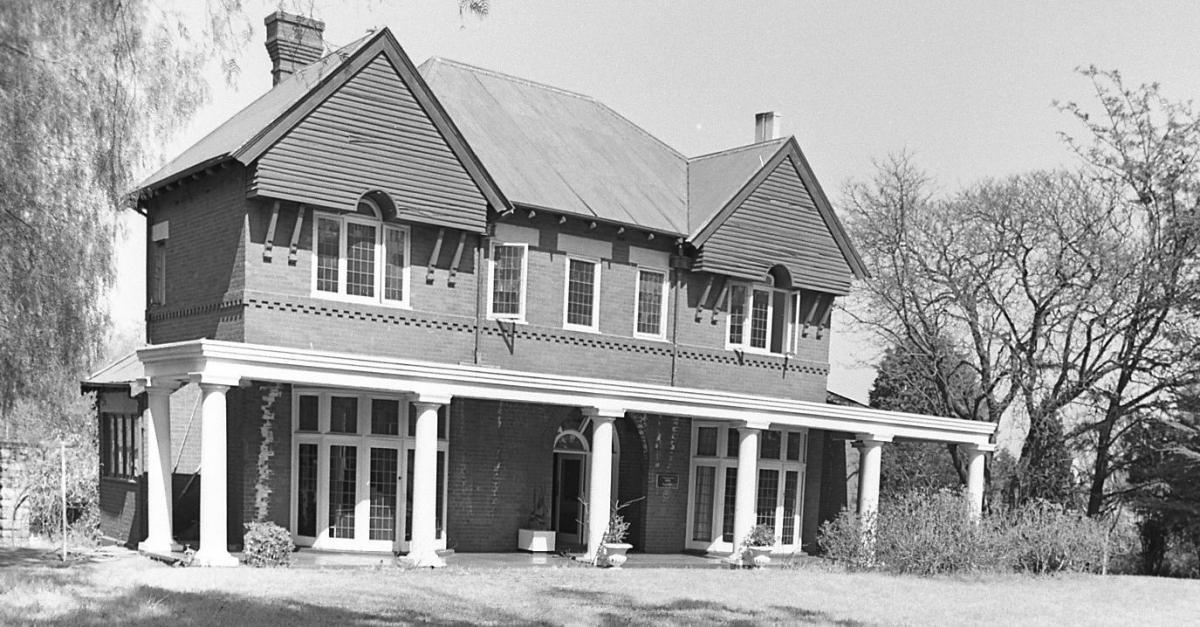
Disclaimer: Any views expressed by individuals and organisations are their own and do not in any way represent the views of The Heritage Portal. If you find any mistakes or historical inaccuracies, please contact the editor.
In late 1971, Robbie Hinds gave up his lease on 5 St David's Place Parktown. His commercial film company had not been a success so I, as his Assistant, Art Director, Driver, Stills Photographer and Caretaker was faced with finding a new home for my myself, my wife and infant son. Another 'orphan of this storm' was Gordon le Sueur who had a room in the annex behind 5 St David's (previously a boarding house). My great friend Arthur Cantrell came to our rescue. He was an old friend of Geoff Maitland, a distinctly eccentric Englishman, who had been renting No 12 Queens Road or 'Wynnstay' but was vacating soon. I hurried up the hill to speak to Geoff Maitland about taking over his lease.
Wynnstay was designed in 1913 by the architect Percival Hill Mitchelson (The Heritage Portal)
Geoff Maitland had been eking out an existence as an aerial photographer, perhaps something he had done in the war, when he probably met Arthur Cantrell. He proudly showed me his darkroom in a converted pantry off the passage to the kitchen. It was rather makeshift and I noticed there were no safelights rigged above his developing trays. Apparently Geoff was in ignorance of safelights and had been processing his prints purely by guesswork in total darkness! I'm sure he had other harmless oddities but he happily directed me to Mr Dennis Paget of Parktown Properties who owned Wynnstay, Sunnyside and several other houses. I duly called on an austere Mr Paget at his home in Rock Ridge Road and negotiated a lease for a year.
Sunnyside (The Heritage Portal)
Accordingly, we moved in on 3 November 1971. Besides Gordon, another friend John Mayall, a soundman in the film industry, took a room. Arthur bagged the main bedroom upstairs as his studio apartment and a new commercials company Cinevision (Paula Meuvussen and Carlos Garvia) rented an office on the ground floor. I had the 'living room' with its splendid bay window as my photographic studio and hastily built a somewhat better darkroom (with safelights) in the pantry. Lesley, I and baby Peregrine had two rooms on the west side upstairs. Between us all we somehow drummed up the rental (R280) each month to pay for living in this splendour.
Picnicking at Wynnstay (Josh Spencer)
And splendid it was being a short stroll from Hillbrow and the shops in Bruce Street, yet Wynnstay seemed remote as if in the country and permeated with that indefinable Parktown aura. The house was built half way up a long stand bounded by Queens Road to the west, Ridge road to the north and Junction avenue to the south. The northern part was dominated by a forest of trees on the steepest part of the land. Behind the house there was a disused and overgrown tennis court and a similarly wild orchard adjacent to Queens road. Right at the bottom on Junction was an outbuilding of servant’s quarters and garage which I used as a workshop.
Thus the 'Queens Road Commune' took shape and although a 'mixed bag' we all got along famously. Happily, before Christmas, I landed a big assignment to build a collapsible 'removal van' for a Laurel and Hardy type ad for Pratley Putty. The house would also be used as the main location which involved building a picket fence along the road, a 'break-away' front door, painting the stairwell and much else. This film, directed by Stuart Wilson, was a success, financially for me although exhausting.
Film shoot at Wynnstay (Josh Spencer)
Perhaps anxious over entrusting his property to a bunch of long-haired, swivel-eyed lunatics, Mr Paget paid us a few visits and was gratified to see that I had mowed the lawn, cleared away all the rubbish left by Geoff Maitland and outwardly at least, the house looked respectable. Perhaps the sight of Arthur Cantrell's splendid Wolesley 16/60 in the driveway was also a comfort. After the film shoot I had replaced the rotting plywood panel in the front door with a sheet of glass and decorated the freshly painted entrance hall with enlargements of my photographs. Lesley acting as joint secretary for Cinevision and myself sat at an impressive chrome and glass desk topped with an electric typewriter. However, these outward signs of industry masked a lack thereof. I turned my hand to anything to earn enough to pay my share of the rent – photography, design, working as art director or assistant cameraman on the few film shoots that came up.
Then both John Mayall and I landed jobs on a feature film that took us away for a month on location. When I returned I learned that in my absence Max Cantrell, Arthur's son had run away from the army and was taking refuge in an upstairs back room. Peter Wykers, a brilliant but shiftless individual had also joined the commune. Peter had a beautiful speaking voice, was highly intelligent but like many Parktown eccentrics he could not find his niche in life and drifted from one meaningless job and one emotional and financial crisis to the next. Like a stray cat, he disappeared after a few weeks. I heard later he had become an authority on antique silverware and working as such in Pretoria.
Max, gloriously unconcerned at being a fugitive, was giving his father nightmares, expecting the arrival at any minute a jeep full of military police. Eventually, Arthur contrived to get him out of South Africa on a forged British Passport. Max ended up in Paris more or less destitute but untroubled at his plight. His lurid letters to Arthur resulted in Arthur flying to Paris to 'rescue Max'. Later I received frantic letters from Arthur imploring me to sell his Wolesley to finance their continued flight from justice. This I did and Arthur and Max fetched up in London where Arthur with typical resourcefulness, sold his paintings to keep both alive. Back in Queens Road all was not well. Cinevision folded their tent and departed. My good friend Gordon had decided to head for New York and John Mayall also left, leaving me with the burden of scraping together the rental on my own.
Wolseley 16-60 (Wikipedia)
I went to see Mr Paget to explain my difficulties and ask for some lenience in view of the improvements I had made at my own expense. He responded by saying he had not commissioned these improvements and I could take the glass out of the front door when I left. He also increased the rent. Landlords are a brutal breed. I did not remove the glass panel and the last time I saw the house, many decades ago, it was still there.
Despite these difficulties, Wynnstay provided us with a marvellous, tranquil home for a year. When Arthur returned and took up residence again, the burden of mustering the rent was eased a little. My son and our four cats delighted in exploring the garden. On a fine day we would picnic on the lawn in the shade of the forest. The house provided me with a photo studio, an art studio, darkroom and workshop. My photo studio was also the venue for frequent Sunday night film shows. Michael Abramovich, another film industry friend, had a knack for finding rare films on 16mm and would arrive with a projector and a gaggle of friends, mostly University students, and set up in my studio. This informal film society prospered at a time when normal cinemas were closed on Sunday. We watched many 'art house' pictures and the 'Dr Phibes' series from Hammer Films. So apart from Arthur Cantrell's paintings and sculptures, my own endeavours in animation and photography, Wynnstay was home to the arts in more ways than one.
On the down side the water was heated with a antiquated coal fired boiler which needed daily cleaning and stoking. This contravened the smokeless zone legislation but Mr Paget refused point blank to install an electric geyser. So we had rather mixed feelings when we moved, in November 1972 to a cheaper rental in Wellington Rd. There, at No 14, hot water was on tap and although more modest the house provided all that was needed and we shared it again with Arthur.
I missed the lovely forest vista as seen from my upstairs bedroom window at Wynnstay, especially on a foggy morning when we might have been miles away in the country rather than a stone’s throw from Hillbrow.
My forest vista (Josh Spencer)
I missed too the walks along those deserted Parktown roads and lanes. But to the west of Queens road all had been bulldozed flat even in 1973 and the last fabulous houses like Pen-Y-Bryn were being torn down. I imagined Wynnstay would ultimately suffer the same fate so it’s amazing that it still stands and is now again functioning as a haven of culture.
Comments will load below. If for any reason none appear click here for some troubleshooting tips. If you would like to post a comment and need instructions click here.

